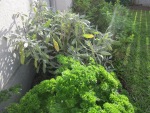 As we always say, you don’t need a garden to have a home herb garden. There are loads of items you can simply collect, bash around a little and create a perfect container for herbs to flourish in.
As we always say, you don’t need a garden to have a home herb garden. There are loads of items you can simply collect, bash around a little and create a perfect container for herbs to flourish in.
Like these cut tree stumps.
Simply draw a rough pencil line around the edge – the width you’d like the holes to be. You can also make different shapes like cutting a square or a rectangle into the circular tree stump.
Now, get your drill out and start drilling holes! You could also use a chisel and a wooden mallet – this takes way longer – but it’s very therapeutic as you sit there bashing away. A nice project for an upcoming holiday, perhaps.
Dig the holes quite deep so you can put enough potting soil into them. Remember, the water will seep out, but very slowly, so be mindful not to over water your tree stump herb pots. Otherwise you may need to drill a hole from the bottom so the water can run out more freely. (Herbs should always be watered lightly every 2 to 4 days).
Try and get stumps of various thicknesses and heights so you can create really interesting looking home herb garden pots that stand next to one another but are at various levels. You could even get stumps from different species of trees from your local tree feller to make the herb pots more interesting.
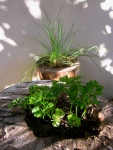
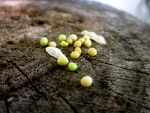

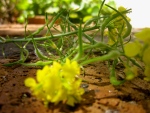

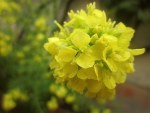

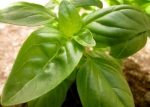
 very quickly when the weather turns a little on the cold side. But, that shouldn’t stop you from growing one of the best herbs around.
very quickly when the weather turns a little on the cold side. But, that shouldn’t stop you from growing one of the best herbs around.

